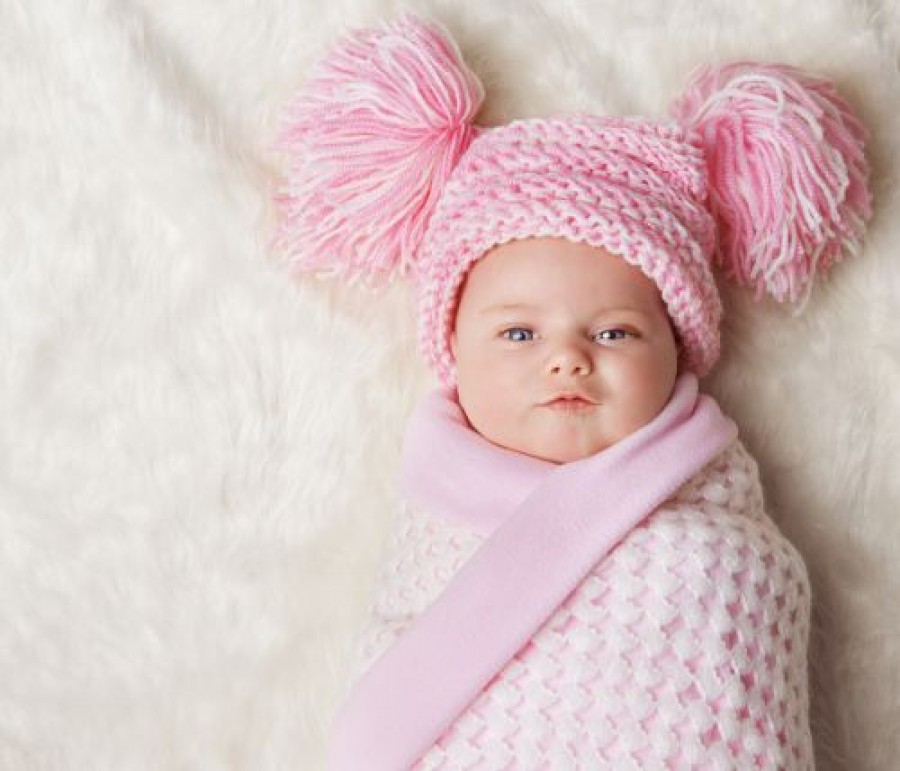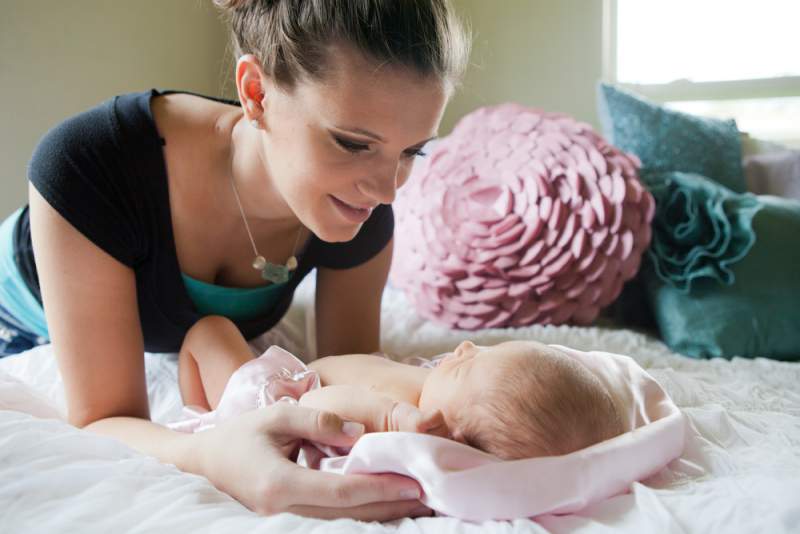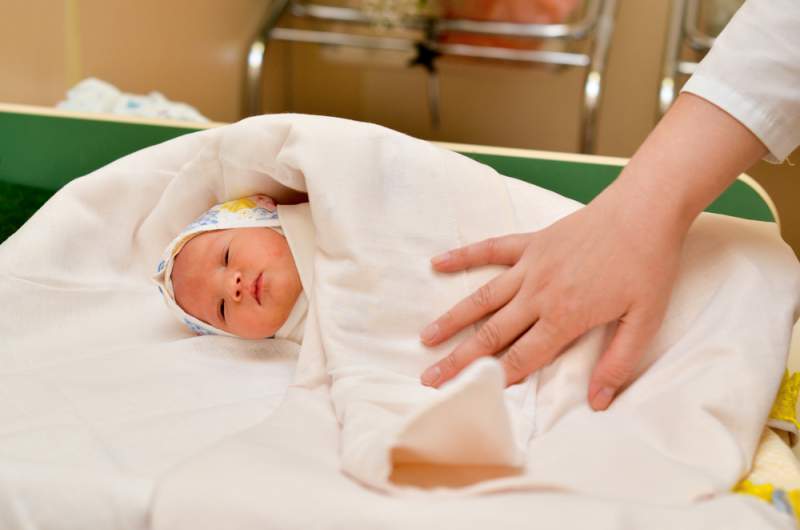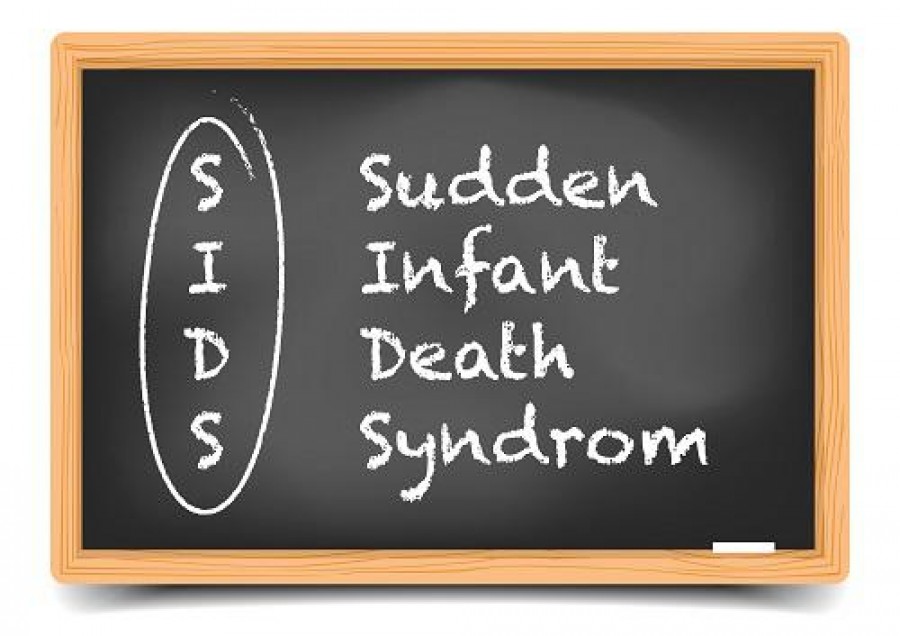Swaddling your baby

One of the most important things that any new parent should know is how to soothe their new baby. One of many techniques to calm a baby is swaddling. Swaddling has been around for thousands of years, but is suddenly becoming more popular again. This is likely because parents are realizing the many amazing benefits that swaddling has to offer.
What is Swaddling?
Swaddling a baby simply means to wrap the baby in cloth. This is typically done with baby blankets, such as receiving blankets, to help calm the baby and increase the amount of sleep the baby, as well as the baby’s parents, get.
Quick History of Swaddling Babies
As one of the oldest parenting practices in the world, swaddling was long considered to be a wonderful way to soothe babies and promote sleep. However, sometime in the 1700s, swaddling babies went under harsh scrutiny and was considered to be unneeded, highly restrictive, and even cruel. Recently, swaddling has experienced a resurgence as studies as well as practice shine light on the many wonderful benefits of swaddling babies.
Steps to Properly Swaddle Your Baby

There are many different ways you can swaddle your baby and different sources suggest different steps. Below we’ve mentioned the easiest one in our view and commonly used by Australian mother:
Step 1: Lay the blanket on a flat surface. Your bed may be a good choice as it will be nice and comfy for baby and provides you with plenty of room to swaddle your baby.
Step 2: Fold one of the corners of the blanket down about six inches. This will be where your baby’s head sticks out of the blanket.
Step 3: Lay your baby on the blanket. The beginning of the baby’s neck should be right at the fold you made.
Step 4: Take the left corner of the blanket and pull it all the way across baby’s body, tucking it under the baby. Make sure that baby’s arms are to the baby’s sides and are straight before doing this.
Step 5: Take the bottom corner of the blanket and pull it up across baby’s body, tucking it under the baby’s left shoulder (baby’s left, your right). Make sure that baby’s legs are able to still move around some. You want your baby to be able to bend their knees easily.
Step 6: Take the right corner of the blanket, and pull it all the way across baby’s body, wrapping it around the baby’s back.
Step 7: Tuck the tail of the blanket into the pass you just made across baby’s chest. Make sure the blanket is nice and snug.
Benefits of Swaddling Your Baby

As mentioned earlier, research and practice has recently proven that swaddling your baby has great benefits for both you and your baby. Some of those benefits are mentioned below:
1. Swaddling Provides Comfort for Your Baby
The transition from the mother’s womb to the world can be shocking for a newborn. They start out being in a small, warm, and a very secure environment and then suddenly everything is new and different, which can be scary for bub. Swaddling your baby can help them feel the warmth and security that they felt in the womb.
2. Swaddled Babies Cry Less
Swaddling your baby can help to decrease the amount of crying your baby does. On average, new babies spend approximately 2 hours a day crying. That can really add a lot of stress to you and your newborn. Luckily, proper swaddling can decrease that amount of crying to an amount that may be easier for you and bub to handle. However, there are various reasons a baby cries which include: hunger, being too hot, feeling unwell etc. To learn more about why do babies cry, read here.
3. Swaddled Babies Sleep More
New parents know all too well how valuable sleep really is. It can certainly be scarce during those first few months with a newborn, but luckily swaddling can help with that. Swaddling helps to calm and comfort babies and many babies sleep better swaddled. Swaddling can also help keep a baby asleep for longer periods of time as restricting their movement with swaddling prevents them from waking themselves up as easily. However, for new mums it can be a challenge sometime to put their baby to sleep and swaddling can help with that. To learn more about 6 expert strategies to put your baby to sleep, read here.
4. Swaddling Can Help with Breastfeeding
There are several ways in which swaddling can help breastfeeding to go smoothly for both mum and baby. First of all, when swaddled, your baby’s hands and arms will be out of the way preventing them from getting in the way when baby tries to feed. Additionally, restricting the movement of your baby through swaddling can actually help your baby to be calm and focused and therefore have an easier time latching onto the breast. Finally, swaddling can increase the amount of time that bub sleeps and in turn increase the amount of time mum is able to sleep. A well-rested mum and bub make for an easier time breastfeeding.
5. Swaddling Reduces the Risk of SIDS
Studies show that the chance of SIDS (Sudden Infant Death Syndrome) is decreased when babies sleep on their back. Studies also show that swaddled babies have an easier time sleeping on their back, therefore swaddling your baby will help them to sleep in a safe position that decreases the chance of SIDS.
Risks of Swaddling Your Baby

With the many benefits of swaddling your baby come a few risks that parents need to be aware of before swaddling their baby. Some of these risks include:
1. A Swaddled Baby May Overheat
Swaddling your baby wraps them tightly in a snug blanket. This helps to hold in body heat, but if your baby gets too hot, they can overheat which can be dangerous. Studies show that if a baby gets overheated that the chance of SIDS increases. To learn more about cues to understand if your baby is too hot or too cold, read here.
2. Swaddling Can Increase Chance of Suffocation
If the blanket that is used to swaddle a baby comes loose, it can become a suffocation hazard. Additionally, if a swaddled baby manages to roll over onto their stomach, they have a higher chance of suffocation as their face can become trapped in the bedding.
3. Swaddling Can Cause Hip Dysplasia
If a baby’s legs are forcibly straightened and/or wrapped too tightly when swaddled, it can cause a condition called hip dysplasia. Hip dysplasia is a condition where the hip joint doesn’t develop properly.
Safety Tips When Swaddling Your Baby

Being a mother to a newborn, infant or toddler is a huge responsibility where being careful is the key. You baby is so soft and delicate at this age that you can’t afford to risk not taking safety measures. A few safety tips when swaddling your baby include:
1. Use a Lightweight Blanket to Swaddle Your Baby
You shouldn’t use a blanket that is too warm or thick when swaddling your baby. Using a nice thin and lightweight blanket for swaddling will keep your bub comfy while also helping to prevent dangerous overheating. You should also consider the temperature in the room when dressing your baby prior to swaddling. Generally, babies should be dressed in one additional layer than what is comfortable for an adult. Knowing this will help you decide what, if anything, your baby should wear underneath the blanket they are swaddled in.
2. Always Place a Swaddled Baby on Their Back
You should always place your baby on their back to sleep, but this is especially true when your baby is swaddled. Placing a swaddled baby on their stomach greatly increases the chances of suffocation and should therefore be always placed on their back.
3. Discontinue Swaddling Once Baby Can Roll Over
Once your baby has learned how to roll over, it is a good idea to stop swaddling them. It would be very dangerous for a swaddled baby to roll over onto their stomach. If they managed to do this, they could become stuck and their face could be trapped in a position that can cause suffocation.
4. Make Sure Blanket is Neither Too Loose Nor Too Tight on Baby
It’s very important to make sure you achieve the correct level of tightness when swaddling your baby. If the blanket is too loose, your baby can wiggle out of it. This creates a potential hazard as the blanket then becomes a suffocation risk. You also don’t want the blanket to be too tight when you swaddle your bub. Having the blanket too tight on a swaddled baby can cause discomfort and blood flow issues. Ideally, your blanket should fit very snuggly around your baby’s arms and torso without digging into their skin. The lower half of their body should have enough room for the legs to bend freely as to prevent hip dysplasia.
What Blanket to Use When Swaddling Your Baby

There are so many different types of baby blankets available, so it can be hard to know which ones are good for swaddling and which ones are not. There are several types of blankets that are great for swaddling your little one.
1. Receiving Blankets
These are no doubt the most common type of baby blanket and are perfect for swaddling. They are lightweight, and generally are big enough to comfortably swaddle your baby. You will need to make sure the blanket is large enough that you have an adequate amount of blanket to tuck around your bub to prevent loosening. Receiving blankets are also a good choice if you’re on a budget as they are typically very affordable.
2. Muslin Blankets
Muslin blankets are going to be a bit more expensive, but if you can afford it, they are completely worth it. They are very thin and large, as well as have a slight stretch to them. The stretchiness of the fabric is a great feature when swaddling your baby as it allows you to get the blanket nice and snug without being too tight.
3. Swaddle Wrap Blankets
If you find swaddling difficult or too time consuming, you can invest in a swaddle wrap blanket. These are blankets that are designed to swaddle babies without any complicated wrapping. They generally feature hook and loop closures. You simply slip bub in and pull the wrap snugly closed.
What Age to Swaddle Your Baby?
Your baby can be swaddled immediately after birth. Just keep in mind that if you are breastfeeding, skin to skin contact is ideal to ensure a good breastfeeding relationship. For this reason, you may want to hold off on swaddling during nursing sessions until breastfeeding is well established. You can continue swaddling your baby until they begin to move around more and are able to roll over. This generally happens around 2 or 3 months of age. So, the best time to swaddle your bub is anywhere between 0-3 months of age.
To Swaddle, or Not to Swaddle?
Whether or not you decide to swaddle your precious little one is completely up to you and your partner. Swaddling, like many other things in parenthood, is a personal decision that each family must make for themselves. The important thing is simply that you learn about the risks and benefits before making a decision about whether or not swaddling is right for your bub and family. Also make sure that if you do decide to give swaddling a shot that you follow important safety tips and learn to swaddle properly. If you do this, swaddling can provide a wonderful and safe way to help bub and the entire family get some much-needed sleep.



